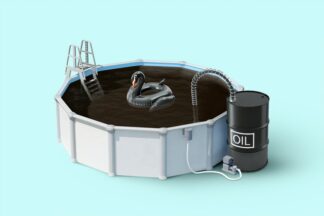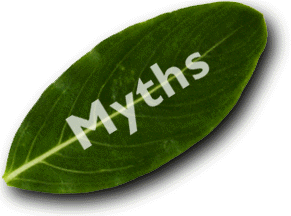Launched at the end of 2006, the Global Social Compliance Programme is a business-driven programme, and aims for continuous improvement of working and environmental conditions in global supply chains.
True Cost Accounting is – while far from sufficient – a step forward in the sustainability discussion, beyond the fashion industry. Let's look hence a bit close into what the three large apparel industry initiatives in this area are really about.
The story of London Cloth is a rather engaging one. It all boils down to a rather single minded fascination for looms, mechanical ones specifically. 2 years on, the hobby has become a proper weaving shed with both mechanical and power looms, and clients such as Ben Sherman.
The Swiss are not a chatty nation. A few facts in relation to sustainable fashion, the nation's importance for organic cotton - and addresses of Zurich shops for stylish eco fashion.
In Medieval times the location of a tannery was heavily based on the requirements of a nearby river or stream, cattle which could supply the hide, and of course oak trees which would supply the bark needed for the tanning process. In the present, because of the demand for luxury at the cheapest possible prices, the industry is pushed out to where it is easier to ignore the moral and environmental reek.
With Sao Paulo Fashion Week just closed I am here to write (again) about Brazilian fashion.
This time it is about an interesting project I got to know of personally, Projeto Contem, a private and independent initiative.
Projeto Contem is both a brand and a network of entrepreneurs working in textile and fashion as well as in food, beauty, design, arts, music and cinema.
Many of the most important resources our current civilisation depends on – all of them finite natural resources - form part of what historically would have been called ‘The Commons’. And yet, many of them are economically treated as 'income' and not the valuable and finite 'assets' they are. That again is the tragedy of the commons.
Julius Walters of Stephen Walters & Sons is a ninth generation weaver of a family business founded 1720. This is the company that wove the silk for the Queen’s coronation robes and for Princess Diana’s wedding dress.
Italy. Known for the style of its inhabitants, the quality and sharp cut of its suits, the inventiveness of its fashion designers, the quality of its fabrics. Yet, if we were to talk sustainability in textiles and fashion, what is going on on the ground?
During the former Soviet Union, Ukraine developed as one of the largest centres of textile industry, representing approximately 50% of the entire SU's textile industry. And even after the SU fell to pieces, the Ukraine for quite some time remained with its manufacturing power. So, what is the status quo today?
How expensive is fair labour really? This article summarises research data to answer these questions. In short: fair labour could be had for cheap.
Historically, fair trade has pitch to and sold thanks to consumers' guilt. A grave mistake as the currently ongoing consumption trends show. Quality, exclusivity is what has survived the economic downturn best.
The second Future Fabrics Expo was hosted at the London College of Fashion on November 7th – 9th 2013, and was attended by a rather large number designers, buyers and students. Roughly 650 fabrics with a reduced environmental impact stemming from around 50 textile mills world-wide, were showcased, along with inspirational and/or interactive videos and information panels.
6 cherry-picked myths, that are often led into the field of discussion against sustainable fashion, and will examine them close up and outside in.
n the course of the last 2 years, the Greenpeace Detox campaign has repeatedly made waves.
The latest such incident happened in the context of what is possibly the world’s most relevant trade fair for performance and outdoor wear ISPO in January 2014. At that point of time, Greenpeace released news that in the water repellent coatings of jackets by some renowned brands, traces of fluorin had been identified. And that said test results had been ‘hidden’ from the public.
Supply chain transparency is – as it happens – among the prime concerns of investors when considering their risk. The news is though, that it really isn’t any news at all. Supply chain transparency has been called for for at least a couple of decades – for reasons that are entirely aligned with profitability, customer service, competitive advantage, product quality and so on and so forth.
How expensive is fair labour really? This article summarises selected research data to answer these questions. In short: fair labour could be had for cheap.
"Made in [your country]" is an ongoing attractive topic in the contemporary sustainable fashion discussion. In many cases, one that borders - or is even right in the middle of - some rather right-wing nationalist sentiments. Europe as a whole does not need that - there is enough quality design and craftsmanship to be proud of without getting into shallow waters.
This is the second post of a two article series. It will look at what we can say about the 'ethics behind a brand' from how they practically do business.
One by one European manufacturers go out of business, and with them a vast quantity of skills and knowledge is lost. The most recent example is Switzerland's Weisbrod silk weavery. Yet: it seems the tide is changing, for good reason.



